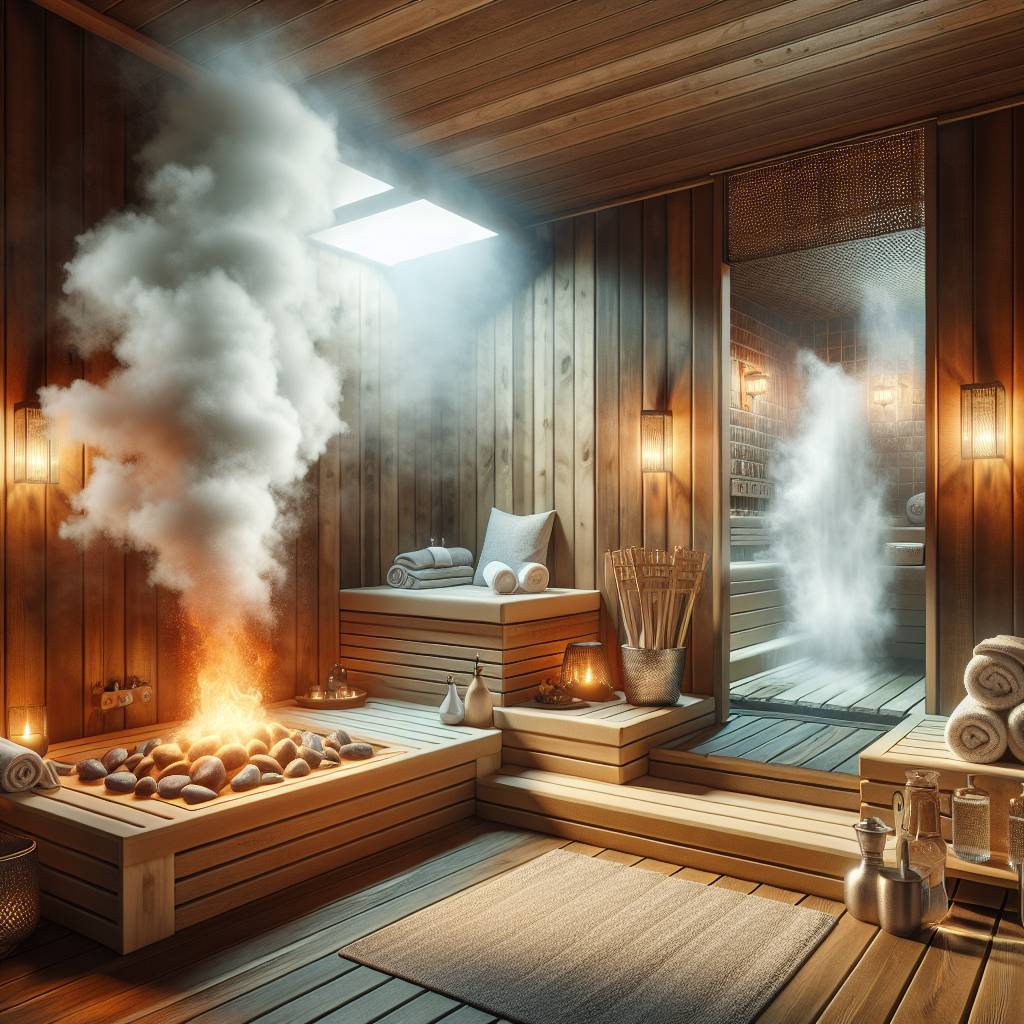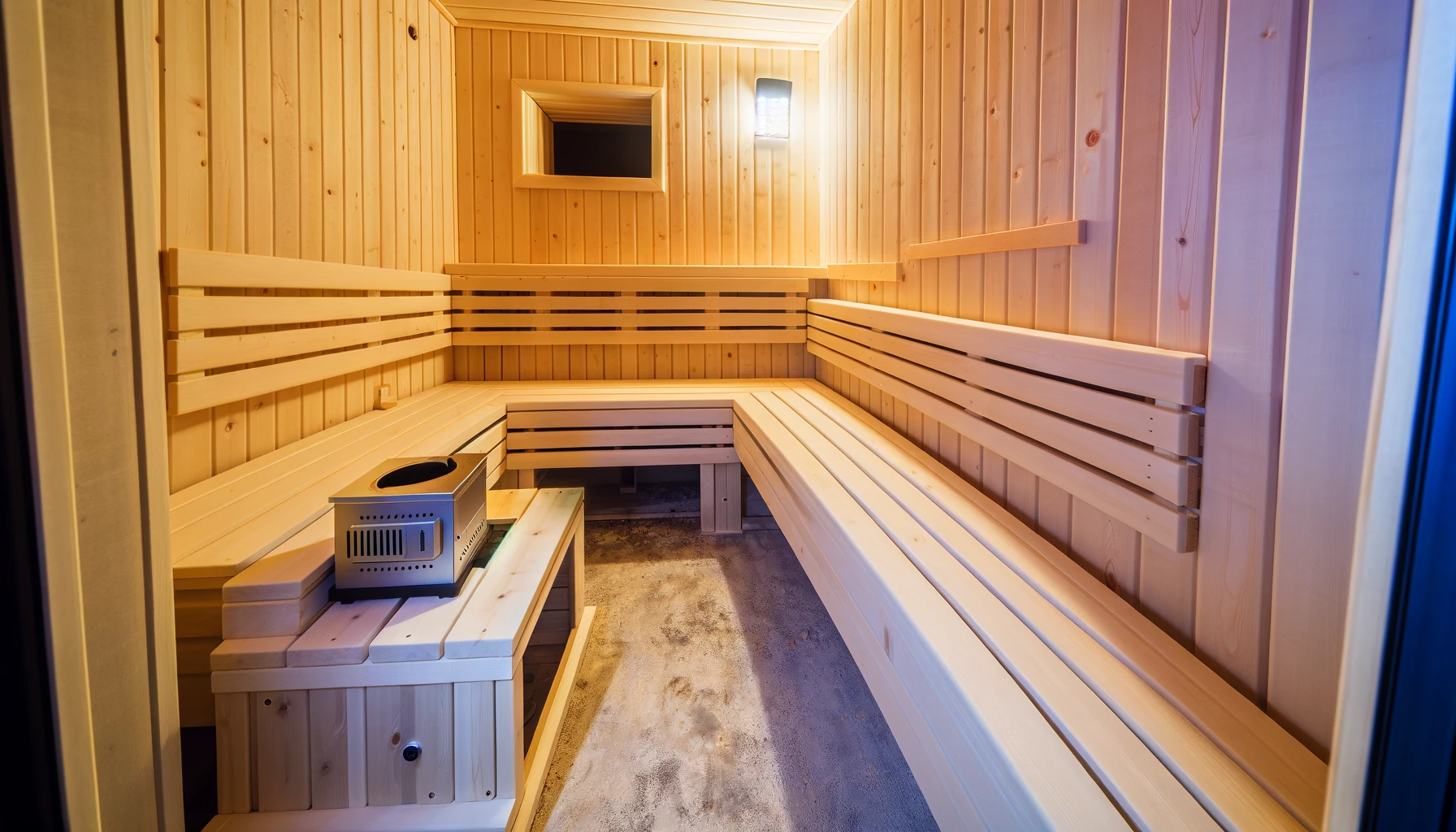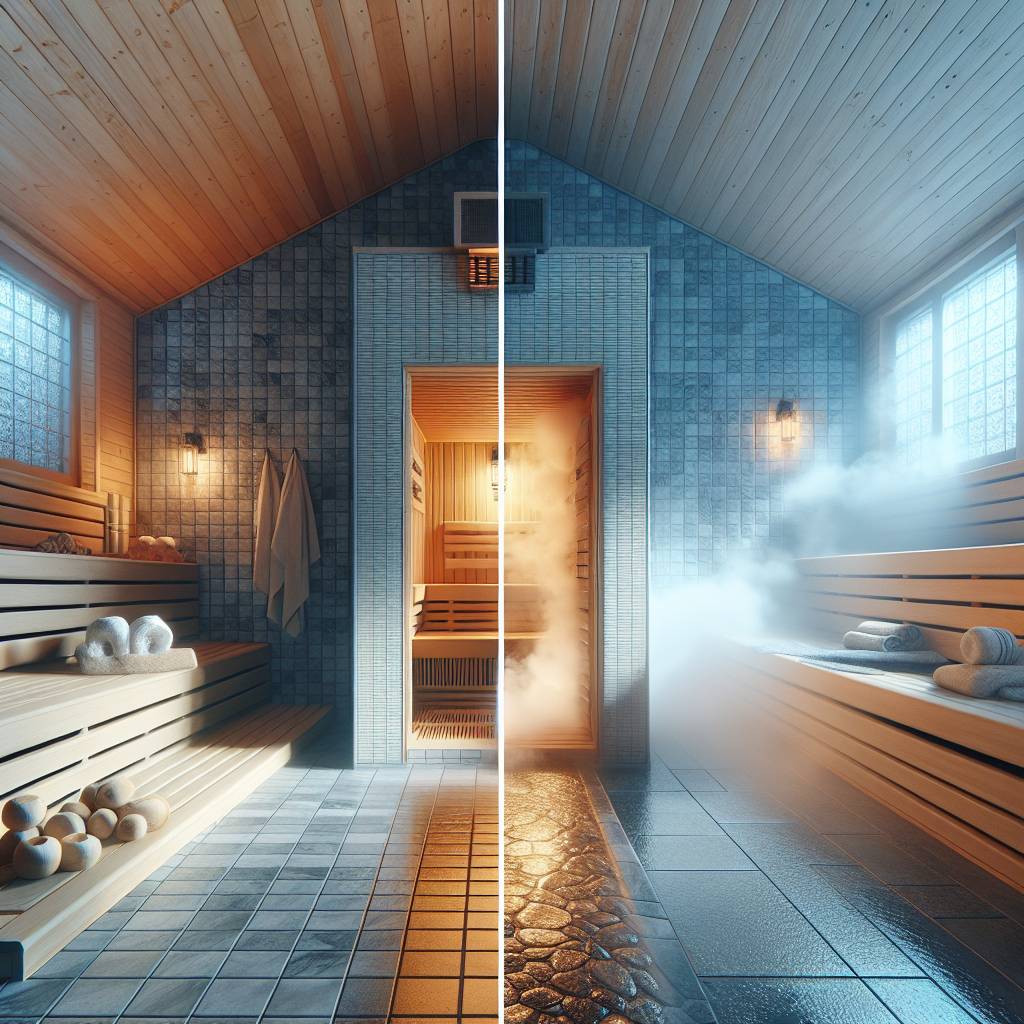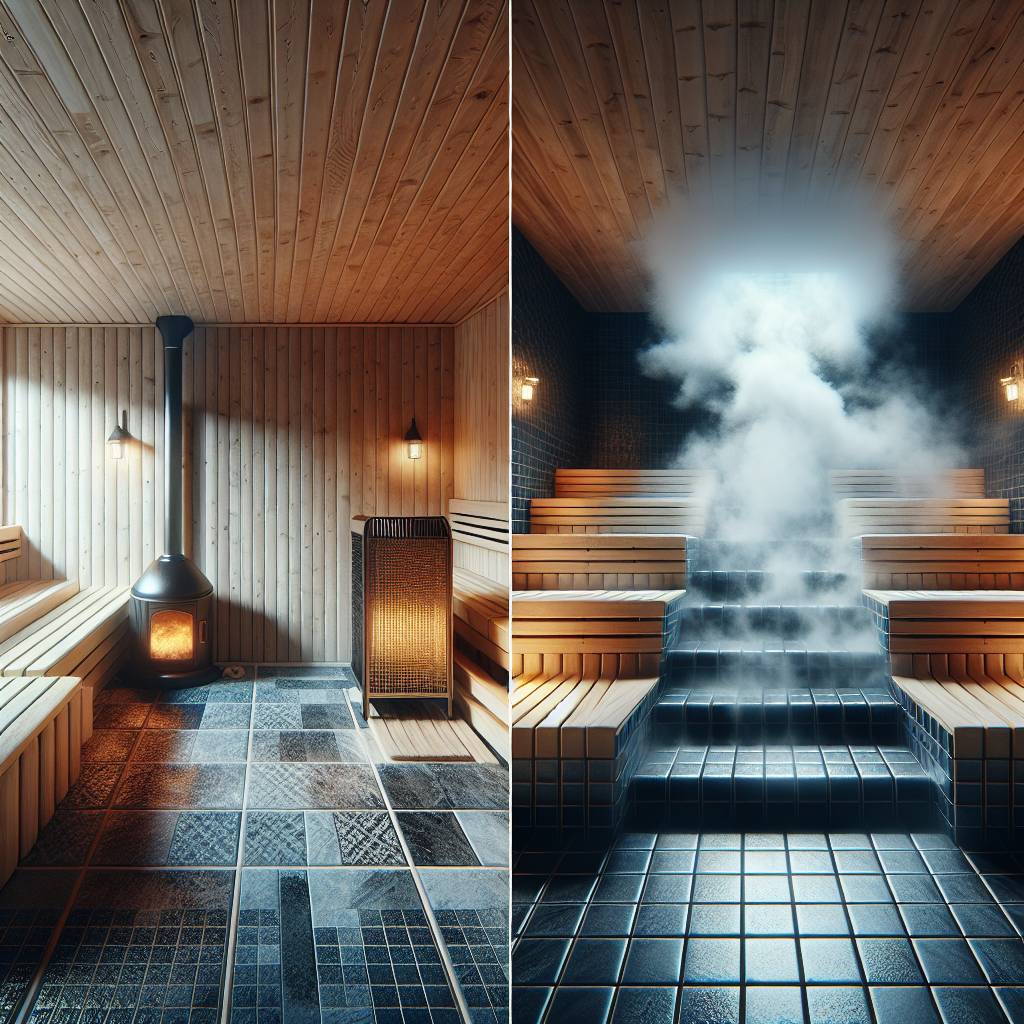Discover the perfect harmony of traditional Finnish sauna and modern steam room elements in one exquisite experience. By combining the age-old Finnish sauna practices with the rejuvenating benefits of a steam room, you can elevate your relaxation to new heights. This innovative approach brings together the dry heat of a sauna and the moist warmth of a steam room, offering a unique blend of therapeutic effects for both mind and body. Embrace the rich history behind these wellness traditions, dating back centuries, as you immerse yourself in a revitalizing escape that soothes your senses and promotes overall well-being with transformative sauna experiences and traditional sauna.
Key Takeaways
- Understanding the basics of combining Finnish sauna and steam room elements can enhance your relaxation experience.
- Essential requirements like proper ventilation and temperature control are crucial for a successful combined sauna and steam room session.
- The secret of relaxation lies in alternating between the dry heat of the sauna and the moist heat of the steam room to maximize benefits.
- By combining elements, you can enjoy improved circulation, detoxification, skin benefits, and stress relief.
- Follow sauna etiquette and best practices to ensure a respectful and enjoyable experience for yourself and others.
- When planning your visit, consider factors like hydration, duration of stay, and listening to your body’s signals for a safe and beneficial sauna and steam room session.
Understanding the Basics
Sauna vs Steam Room
Saunas feature dry heat with temperatures ranging from 160-200°F, while steam rooms maintain a lower temperature around 110-120°F. The humidity in saunas is low, typically below 20%, whereas steam rooms have humidity levels near 100%. These differences create distinct experiences for users.
Steam rooms provide moist heat that can help open up pores and improve skin hydration, while saunas offer dry heat that promotes intense sweating and detoxification. Individuals seeking a more social experience often prefer saunas due to their cultural significance in Finnish traditions, where sauna sessions are considered a communal activity promoting relaxation and well-being.
Health Benefits
Regular use of saunas and steam rooms can significantly enhance blood circulation, leading to improved cardiovascular health. Sweating profusely in these heated environments helps the body eliminate toxins through the skin, supporting overall detoxification processes. The weight loss observed after sauna or steam room sessions is primarily due to water weight reduction through sweating.
- Benefits of Saunas:
- Promotes relaxation and stress relief.
- Helps alleviate muscle tension and soreness.
- Benefits of Steam Rooms:
- Hydrates the skin and clears nasal passages.
- Can aid in respiratory health by loosening congestion.
Key Elements
Both saunas and steam rooms consist of essential components such as benches, walls made of wood or tile, and a heating source. Proper ventilation is crucial to ensure fresh air circulation and prevent overheating. Insulation plays a vital role in maintaining the desired temperature within the sauna or steam room environment.
- Sauna Components:
- Wooden benches for seating.
- Rocks on top of electric stoves to generate heat.
- Steam Room Components:
- Tiled walls to contain moisture.
- Steam generators to produce steam.
Essential Requirements for a Combined Experience
Room Design
When designing a combined Finnish sauna and steam room, consider the layout carefully. Ensure there is enough space for both elements without overcrowding. Incorporate natural materials such as wood and stone to create an authentic and relaxing ambiance. These materials not only enhance the aesthetic appeal but also contribute to the overall experience.
Proper lighting is crucial for creating the right atmosphere in a sauna and steam room. Install dimmable lights that can be adjusted based on preferences. Seating arrangements should be comfortable and spacious to accommodate users during their sessions. Well-placed benches allow individuals to relax and enjoy the heat therapy fully.
Temperature Control
To maintain an optimal experience, it is essential to have precise temperature control in both the sauna and steam room. Use quality heating systems that allow for easy adjustments. For saunas, traditional methods like wood stoves or electric heaters are common. Steam rooms, on the other hand, rely on generators to produce steam at controlled temperatures.
The recommended temperature ranges vary between saunas and steam rooms. Saunas typically range from 70°C to 100°C, while steam rooms operate at lower temperatures around 40°C to 50°C. Consistency in temperature is key to ensuring safety and comfort for users. Avoid sudden fluctuations that can disrupt the experience.
Humidity Levels
Humidity plays a significant role in determining the overall experience in saunas and steam rooms. In saunas, humidity levels are lower compared to steam rooms but still contribute to the heat sensation. Steam rooms, with their higher humidity levels, offer a more intense experience beneficial for respiratory health.
Controlling humidity in steam rooms involves regulating the amount of steam produced by the generator. This ensures a consistent level throughout the session. Higher humidity levels in steam rooms help open up airways, making breathing easier and promoting respiratory wellness.
The Secret of Relaxation
Heat Therapy
Heat therapy in saunas and steam rooms offers therapeutic effects by relaxing muscles deeply. It alleviates joint pain and enhances flexibility, aiding in post-workout recovery. The intense heat promotes overall well-being by reducing stress levels.
Benefits of cold therapy complement heat therapy in sauna experiences. Cold therapy enhances circulation, aiding in muscle recovery and reducing inflammation. Alternating between hot and cold sessions can invigorate the body and improve overall circulation.
Cold Therapy
Cold therapy plays a vital role in contrast to heat therapy in sauna and steam room sessions. It enhances circulation, promotes muscle recovery, and reduces inflammation effectively. Incorporating cold therapy into spa experiences can provide a holistic approach to relaxation.
Rest periods between sauna and steam room sessions are crucial for maximizing the benefits of heat therapy. Resting allows the body to cool down, preventing overheating, and aiding in muscle recovery. Optimal rest durations ensure a safe and enjoyable spa experience.
Rest Periods
Emphasizing the significance of rest periods is essential for reaping the full benefits of sauna and steam room sessions. Resting between sessions allows the body to recover, prevents overheating, and maintains the effectiveness of heat therapy. Engaging in light activities during rest periods can enhance relaxation further.
- Properly timed rest periods
- Prevent overheating
- Aid in muscle recovery
Benefits of Combining Elements
Enhanced Relaxation
Enhancing relaxation in sauna and steam room sessions can be achieved through various techniques. Aromatherapy involves using essential oils to create a calming atmosphere, promoting relaxation and reducing stress levels. Chromatherapy, also known as color therapy, utilizes different colors to influence emotions and enhance relaxation.
Mindfulness practices and deep breathing exercises can significantly improve the relaxation experience in sauna and steam rooms. Focusing on the present moment and engaging in deep, slow breathing can help reduce anxiety and promote a sense of calmness during the session. Incorporating these practices can amplify the overall benefits of sauna and steam room sessions.
Music or guided meditation can play a crucial role in promoting relaxation and stress relief during sauna and steam room sessions. Listening to soothing music or following a guided meditation can help individuals unwind, relax their minds, and enhance the overall relaxation experience.
Improved Health Outcomes
Regular use of saunas and steam rooms has been linked to numerous long-term health benefits, especially concerning cardiovascular health. The heat exposure in these sessions can help improve blood circulation, lower blood pressure, and promote heart health over time.
Sauna and steam room sessions are also beneficial for skin health and detoxification. The heat and steam open up pores, allowing for deep cleansing of the skin and removal of toxins. This process can contribute to clearer, healthier skin and overall improved skin condition.
Engaging in sauna and steam room experiences is not only beneficial for physical health but also for mental well-being. These sessions can help reduce stress levels, promote relaxation, and improve mood. By incorporating sauna and steam room experiences into a wellness routine, individuals can effectively manage stress and enhance their overall mental well-being.
Versatile Experiences
Sauna and steam rooms offer versatile experiences that cater to individual preferences. Infrared saunas utilize infrared light to generate heat directly in the body, providing a gentle yet effective heat therapy experience. Herbal steam rooms infuse aromatic herbs into the steam, offering therapeutic benefits for respiratory health.
Customizable features such as lighting options, scents, and music selection enhance the overall spa experience in sauna and steam rooms. Personalizing these elements allows individuals to create a relaxing ambiance that suits their preferences, further enhancing the benefits of the session.
Combining sauna and steam room sessions with various treatments and therapies offers a holistic approach to wellness. From massages to body scrubs, individuals can complement their sauna experience with additional therapies that promote relaxation, rejuvenation, and overall well-being.
Sauna Etiquette and Best Practices
Hygiene Rules
Before entering regular sauna bathing or upcoming sauna events, it is crucial to adhere to strict hygiene practices. Showering before using sauna and steam rooms is essential to maintain cleanliness. Use a towel on benches and avoid direct contact with your skin to promote hygiene in shared spaces.
Ensure that you bring a clean towel to sit on and wipe off any sweat to prevent the spread of bacteria. Remember to shower after your session to remove any toxins released through sweating. By following these practices, you contribute to a more hygienic environment for everyone.
Usage Tips
To make the most of your sauna and steam room experience, remember to stay hydrated throughout your session. Listen to your body’s signals and step out if you feel dizzy or uncomfortable. For optimal results, aim for regular sauna bathing sessions 2-3 times per week, allowing your body to adapt gradually.
For beginners, start with shorter sessions at lower temperatures and gradually increase both time and heat exposure. This gradual acclimatization helps your body adjust to the intense heat therapy provided by saunas and steam rooms. By pacing yourself, you can enjoy the benefits without risking discomfort or overheating.
Safety Measures
Understanding the risks associated with sauna and steam room use is crucial for ensuring a safe experience. Individuals with pre-existing health conditions should consult their healthcare provider before using these facilities. It is essential to be aware of signs of overheating or dehydration, such as dizziness, nausea, or excessive sweating.
During your session, pay attention to how your body responds to the heat and humidity. If you experience any discomfort or alarming symptoms, exit the sauna or steam room immediately. Prioritize your safety by respecting the guidelines in place and being mindful of your body’s limits.
Planning Your Visit
Choosing Your Room
When selecting a sauna or steam room, consider your preferences and health objectives. Factors like size, design, and available amenities play a crucial role. Ensure to visit reputable spas for quality experiences.
- Considerations:
- Size
- Design
- Amenities
Preparing for Your Visit
Prepare for your sauna or steam room visit by bringing essential items like towels, water, and suitable attire. Before entering, hydrate well and take a shower. Arriving early helps to relax before sessions.
- Checklist of items:
- Towels
- Water
- Appropriate attire
Aftercare Tips
After sauna or steam room sessions, focus on hydration and rest for recovery. Gradually cooling down is vital to prevent dizziness. Incorporate post-session rituals into your self-care routine for lasting benefits.
Final Remarks
Now that you grasp the basics, understand the requirements, and appreciate the benefits of merging Finnish sauna and steam room elements, you’re ready to dive into this rejuvenating experience. Remember the secret lies in relaxation, so ensure you follow sauna etiquette and plan your visit thoughtfully. Embrace the warmth, steam, and tranquility for a truly invigorating session that nurtures both body and mind.
Take the initiative to combine these elements in your next spa visit or even create a similar setup at home for a daily retreat. Your well-being deserves this pampering, and the benefits are boundless. So, go ahead, immerse yourself in the world of sauna and steam rooms, and let the relaxation begin!
Frequently Asked Questions
What are the key differences between a Finnish sauna and a steam room?
The main difference lies in the type of heat used. A Finnish sauna provides dry heat with temperatures typically between 70-100°C, while a steam room offers moist heat around 40-50°C. Saunas have lower humidity levels compared to steam rooms.
How can I create a combined experience of Finnish sauna and steam room at home?
To combine elements, consider installing a sauna heater that allows for water to be poured over hot stones to create steam. You can also add essential oils to the water for aromatherapy benefits. Ensure proper ventilation and safety measures are in place.
What are the health benefits of alternating between sauna and steam room sessions?
Alternating between sauna and steam room sessions can help improve circulation, relax muscles, detoxify the body through sweating, reduce stress, and promote overall well-being. It’s important to stay hydrated before, during, and after your sessions.
Can pregnant women or individuals with certain health conditions use both the sauna and steam room?
Pregnant women and individuals with specific health conditions should consult their healthcare provider before using saunas or steam rooms. Conditions such as high blood pressure, heart problems, respiratory issues, or skin sensitivities may require medical guidance before using these facilities.
How should one prepare for a visit combining Finnish sauna and steam room elements?
Hydrate well before your visit, bring a towel to sit on inside the sauna or steam room, wear loose and comfortable clothing, remove any jewelry, take a shower beforehand, and follow proper etiquette by respecting others’ space and maintaining cleanliness.






